Quito, Ecuador
I got a sunburn today. I am pretty happy about that.
Nowhere in the world does the sun play a greater role in the daily lives of the people than in Ecuador. Ecuadorians don’t just celebrate the sun; they worship it. The sun plays a significant roll in regional art, it shows up in patterns on clothing and home décor, and it penetrates the language.
When the Spanish brought Roman Catholicism to South America, they were obliged to incorporate elements of sun worship and symbolism into their teaching, or the people would not have adopted it.
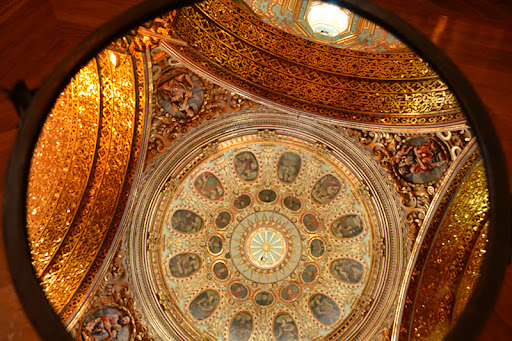
Iglesia de la Compañia De Jesús, with the sun at the centre of the dome.
Quito is the closest city to the sun.
The earth bulges slightly at the equator. With the Andes Mountains straddling that bulge and Quito perched high on a mountain ridge, we are closer to the sun here than at the top of Mount Everest.
Standing on the balcony of our hotel, I can almost touch it.
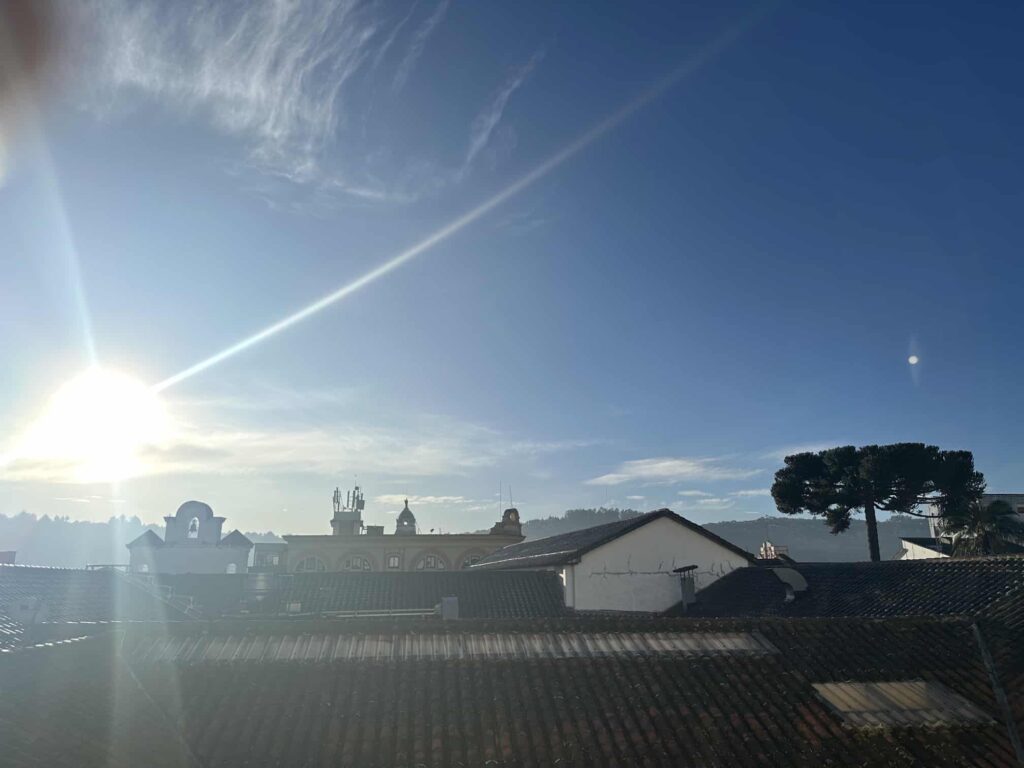
The sun casts short shadows in Ecuador.
The sun’s arc barely breaches the horizon for half the year in Canada; as a result, objects cast long shadows all winter.
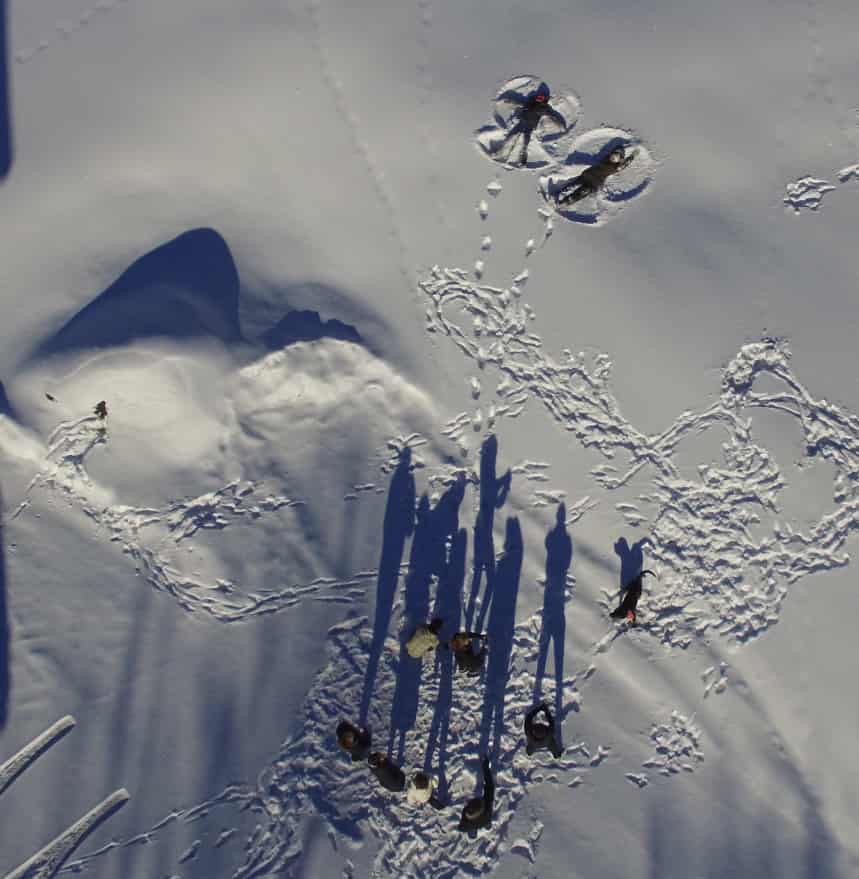
A bird’s eye view of Canadians playing in the snow on the winter Solstice.
At the equator, with the sun directly overhead, shadows are unfamiliar to those of us who live on the forehead of the earth.
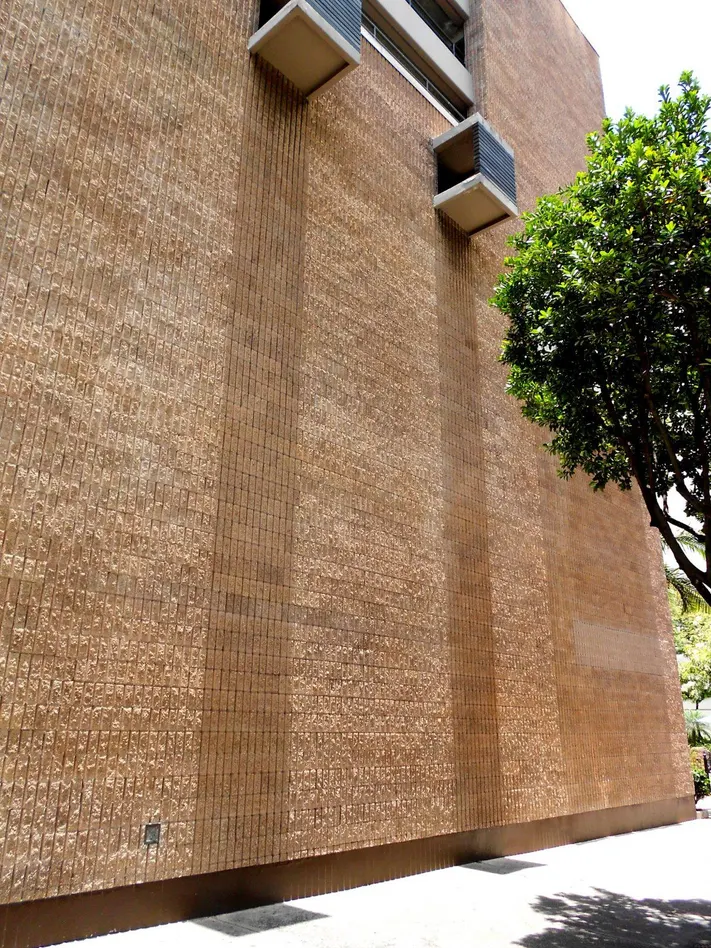
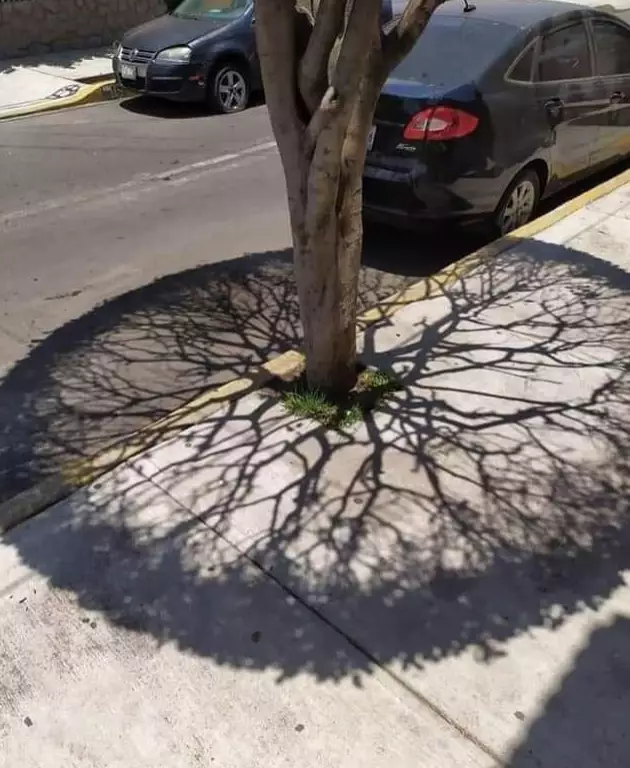
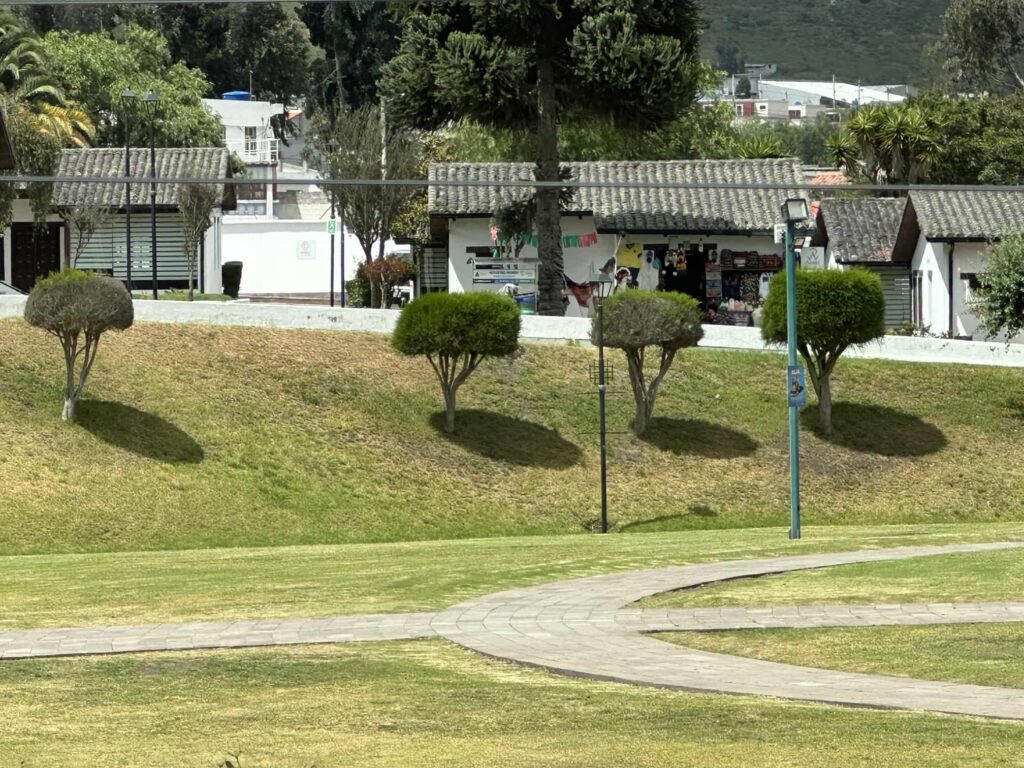

We visited this temple to the sun and the equator today.
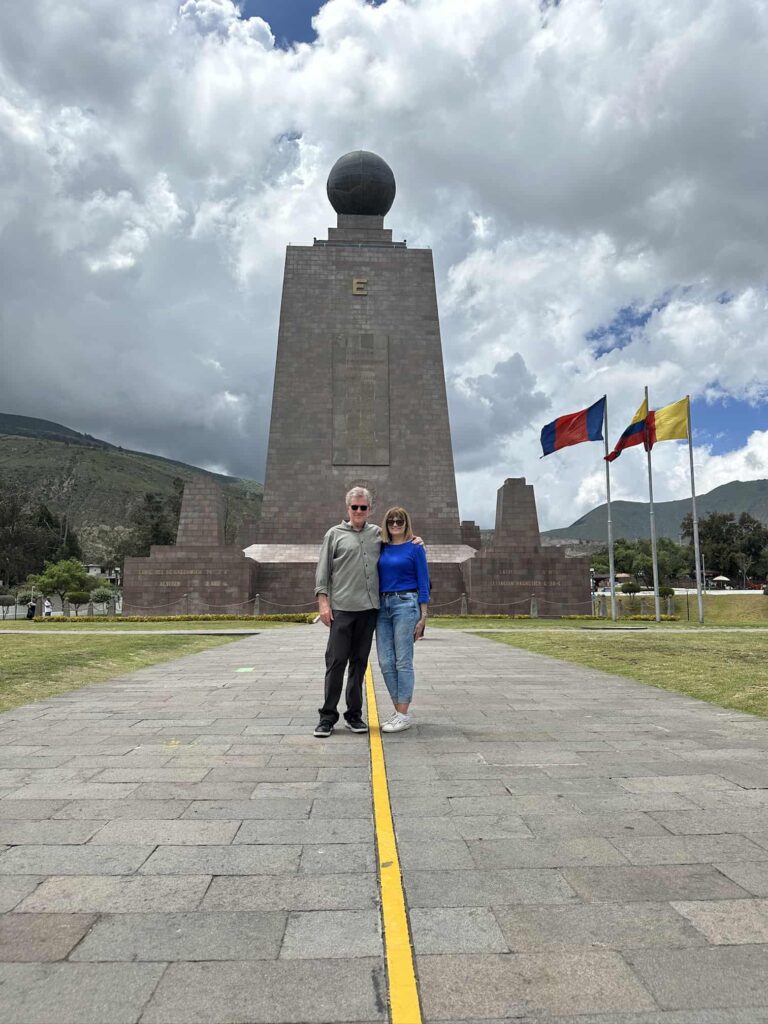
Ciudad Mitad del Mundo (Middle of the World City) is situated on the ecuator, just north of Quito.
Bear is in the northern hemisphere; I am in the south.
Coriolis Effect
We have all heard of the Coriolis Effect, where water in a sink in the northern hemisphere drains in a counterclockwise direction, and clockwise in the southern hemisphere. Until today, when we visited the Middle of the World Monument, I didn’t realize that the fluid in our body reacts the same way. Watch this video of Bear attempting to walk along the equator with the fluid in her inner ears swirling in opposite directions.
Please note: no margaritas were consumed in the making of this video.
In the afternoon we visited Inca ruins at Rumicucho.
The Inca were keenly aware of the movement of the earth in relation to the sun. They celebrated equinoxes and solstices and paid daily tribute to the sun.
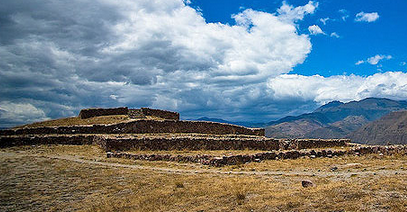
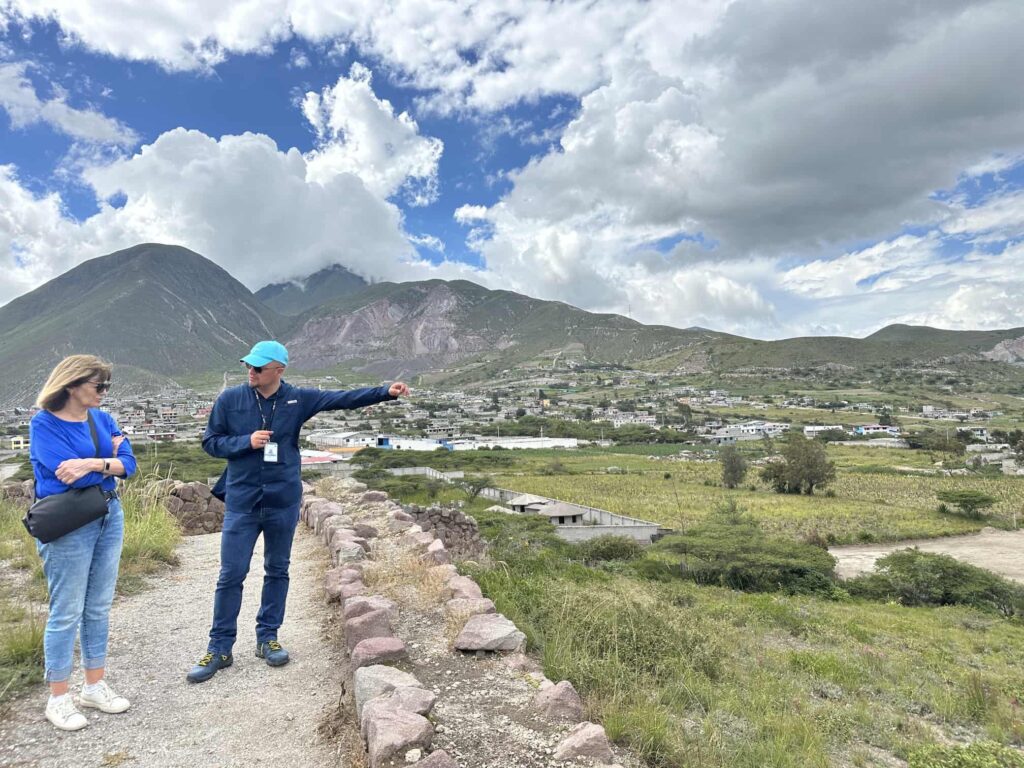
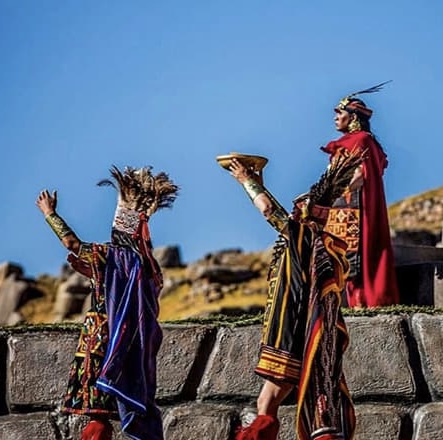
Life of the Incas was so entwined with the sun, they considered their king to be…
… The Son of the Sun.
Tomorrow, we are off to Otavalo for an Indigenous experience, and maybe a taste of guinea pig.


Millie Watson
What wonderful and interesting experience you two are having there. I am intrigued with the shadow or lack of and the photos you find for comparison to same. As for the Hemisphere thing, I immediately compared it the the Date Line in England! I have always credited those that discovered how these elements on earth were understood…and then capitalized the science to each. I’m always amazed. Love to follow your emails.
Russ Paton
Travel is such a humbling experience. There is so much out there, and we know so little of it.
GG
Oh my, vertical shadows. Now that’s something that taxes my photographic brain, but I bet it would be fun taking photos there. I’m looking forward to some stunning ones.
Russ Paton
The biggest problem with vertical sunshine, is that thinning spot on the top of my head. 😇
Rhonda
So interesting, Russ!! Love the cute video of Terri!
Russ Paton
She wasn’t thrilled about me broadcasting it but it is cute.